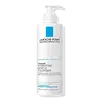What's inside
What's inside
 Key Ingredients
Key Ingredients

 Benefits
Benefits

 Concerns
Concerns

 Ingredients Side-by-side
Ingredients Side-by-side

Water
Skin ConditioningSodium Cocoyl Isethionate
CleansingCoco-Caprylate
EmollientPentylene Glycol
Skin ConditioningGlycerin
HumectantPolyglyceryl-3 Cetyl Ether
EmulsifyingSodium Stearoyl Glutamate
CleansingBehenyl Alcohol
EmollientPrunus Amygdalus Dulcis Oil
Skin ConditioningCeramide NP
Skin ConditioningCeramide AP
Skin ConditioningCeramide As
Skin ConditioningCeramide EOP
Skin ConditioningCeramide Ns
Skin ConditioningKaolin
AbrasiveMalic Acid
BufferingLauric Acid
CleansingSodium Lauroyl Oat Amino Acids
CleansingSodium Cocoyl Glycinate
CleansingSesamum Indicum Seed Oil
EmollientHydrogenated Lecithin
EmulsifyingDipropylene Glycol
HumectantXanthan Gum
EmulsifyingGlyceryl Stearate
EmollientSucrose Distearate
EmollientCholesterol
EmollientWater, Sodium Cocoyl Isethionate, Coco-Caprylate, Pentylene Glycol, Glycerin, Polyglyceryl-3 Cetyl Ether, Sodium Stearoyl Glutamate, Behenyl Alcohol, Prunus Amygdalus Dulcis Oil, Ceramide NP, Ceramide AP, Ceramide As, Ceramide EOP, Ceramide Ns, Kaolin, Malic Acid, Lauric Acid, Sodium Lauroyl Oat Amino Acids, Sodium Cocoyl Glycinate, Sesamum Indicum Seed Oil, Hydrogenated Lecithin, Dipropylene Glycol, Xanthan Gum, Glyceryl Stearate, Sucrose Distearate, Cholesterol
 Reviews
Reviews

Ingredients Explained
These ingredients are found in both products.
Ingredients higher up in an ingredient list are typically present in a larger amount.
Ceramide NP is a type of ceramide.
Ceramides are intercellular lipids naturally found in our skin that bonds dead skin cells together to create a barrier. They are known for their ability to hold water and thus are a great ingredient for dry skin.
Ceramides are an important building block for our skin barrier. A stronger barrier helps the skin look more firm and hydrated. By bolstering the skin ceramides act as a barrier against irritating ingredients. This can help with inflammation as well.
If you would like to eat ceramides, sweet potatoes contain a small amount.
Read more about other common types of ceramides here:
Ceramide AP
Ceramide EOP
Glycerin is already naturally found in your skin. It helps moisturize and protect your skin.
A study from 2016 found glycerin to be more effective as a humectant than AHAs and hyaluronic acid.
As a humectant, it helps the skin stay hydrated by pulling moisture to your skin. The low molecular weight of glycerin allows it to pull moisture into the deeper layers of your skin.
Hydrated skin improves your skin barrier; Your skin barrier helps protect against irritants and bacteria.
Glycerin has also been found to have antimicrobial and antiviral properties. Due to these properties, glycerin is often used in wound and burn treatments.
In cosmetics, glycerin is usually derived from plants such as soybean or palm. However, it can also be sourced from animals, such as tallow or animal fat.
This ingredient is organic, colorless, odorless, and non-toxic.
Glycerin is the name for this ingredient in American English. British English uses Glycerol/Glycerine.
Learn more about GlycerinWater. It's the most common cosmetic ingredient of all. You'll usually see it at the top of ingredient lists, meaning that it makes up the largest part of the product.
So why is it so popular? Water most often acts as a solvent - this means that it helps dissolve other ingredients into the formulation.
You'll also recognize water as that liquid we all need to stay alive. If you see this, drink a glass of water. Stay hydrated!
Learn more about Water